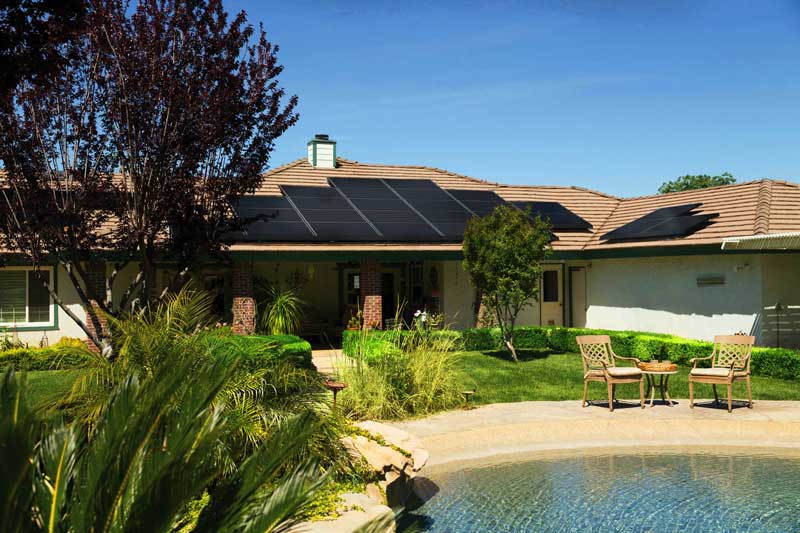
For move-up homebuyers having energy-efficient homes with smart features are appealing. Buyers are on the lookout for high-quality, modern systems that will save them money and shrink their environmental impact for years to come. So what are these smart features and energy-efficient homes?
Some energy-efficient features include:
Home Insulation- Fiberglass, cellulose, and rigid foam board is most commonly used as home insulation because they are economical, readily available, and familiar to most contractors. On each type of insulation, a label states the R-value per inch, a measure of resistance to heat transfer. The bigger the number, the more effective the insulation. Where space is tight, such as within wall cavities, you need a high R-value per inch. In an attic or under a floor, where there is more room, you can boost the insulation value of a lower-rated material simply by using a thicker layer.
As a rule, the more insulation you add, the more money you’ll save. But there is a point beyond which you can spend more on materials than you’ll recoup in lower energy bills. The tipping point varies depending on where you live.
Window Replacement (double-pane)- the Department of Energy estimates that you can save $125 to $465 a year just from replacing windows with new windows with higher Energy Star ratings. Energy Star windows for northern climates are designed to let in infrared light that causes heat generation, so they trap warm air inside your home. These windows are double or triple-paned, and their low U-factor proves their insulating capabilities. Low-e or low-emissivity coatings are an effective way to keep heat inside your home in the winter or to keep it out of your home in the summer. These coatings are designed to control the way the heat energy from sunlight moves around. An exterior low-e coating can prohibit the ultraviolet and the infrared light, in other words, the heat from entering your home while still allowing the sunlight to pass through.
In northern climates when heat gain is more desirable, a low-e coating is often used in the reverse. The full spectrum of light is allowed into the home as much as possible, but the heat energy it produces is trapped inside. This creates a powerful greenhouse effect that keeps a home extra warm during the coldest months of the year. It is worth noting that high quality (triple pane, argon, low E) allow for heat gain, while reducing nighttime heat loss.
Air Sealing– Green Building Advisor estimates a whopping one-third of the energy you pay for probably leaks through holes in your house. Air leaks can also cause moisture and indoor air quality problems. Stopping unwanted airflow is an important job of a building enclosure. Air leaks through walls, roofs, and floors can have the biggest effect on the durability of a house. Uncontrolled airflow through the shell not only carries moisture into framing cavities, causing mold and rot, but it can also account for a huge portion of a home’s energy use and cause indoor air quality problems as well.
Solar Electric Panels– The efficiency of residential solar panels has dramatically increased over the past decade. The other good news is that the cost of solar panels has fallen more than 80% over the last 8 years making solar panels a very lucrative investment. Not all solar panels are created equally. All manufacturers have different energy-efficiency, so this is an important metric when comparing manufacturers. Solar panel efficiency is a measurement of a solar panel’s ability to convert sunlight into usable electricity. Given the same amount of sunlight shining for the same duration of time on two solar panels with different efficiency ratings, the more efficient panel will produce more electricity than the less efficient panel. In practical terms, for two solar panels of the same physical size, if one has a 21% efficiency rating and the other has a 14% efficiency rating, the 21% efficient panel will produce 50% more kilowatt-hours (kWh) of electricity under the same conditions as the 14% efficient panel. Thus, maximizing energy use and bill savings are heavily reliant on having top-tier solar panel efficiency. More efficient solar panels tend to cost more than their less efficient counterparts. You may want to analyze whether that upfront cost difference is justified by the increased saving achieved by generating more electricity over the lifespan of your solar energy system.
Energy Efficient Lighting- There are two main types of commercially available energy-efficient light bulbs: LEDs and CFLs. Both are better than traditional incandescent light bulbs when it comes to energy efficiency, but their savings and practicality can be variable. LED bulbs produce 90 to 112 lumens per watt. Compact Fluorescent Lamps produce 40 to 70 lumens per watt, and traditional incandescent bulb fixtures only produce 10 to 17 lumens per watt. LED bulbs to consume the least power and have the longest lifespan, lasting as long as 40 or 50 years. This kind of bulb is both energy-efficient and environmentally friendly because it does not contain mercury or lead as CFLs do. LEDs also function much better than CFLs when it comes to using dimmer switches.
Compact Fluorescent Lamps, also called CFLs, are the most popular energy-efficient bulbs. They have a lifespan of 8 to 10 years and cost about $4 per bulb. One of the main downsides to CFLs is that they contain mercury and therefore make safe disposal difficult. Also, they generally cannot be used with a dimmer switch and are slow to reach their full brightness.
Energy Star Appliances- Appliances use a lot of energy daily, and replacing them with Energy Star rated models can help you save. The key, however, is to strategically replace your appliances; dryers and refrigerators will show the biggest impact on savings out of any other major appliance. So, if you can only replace one or two, focusing on this area will have the highest payoff.
Efficiency Water Heaters- Because heating your household’s water accounts for almost 20 percent of your annual home’s energy expenses, selecting the right type of water heater is important when you need to replace or are having a new home built. The biggest trend in recent years has been tankless water heaters. There’s a good reason why tankless models are so popular these days. Lower monthly energy bills, practically unlimited hot water, and compact size are the main reasons. The price of these units can scare some homeowners off. If you have a larger household, be sure to check the output of the tankless water heater. Tankless systems are the most effective way to ensure consistent hot water on demand. They will cost you more up-front for the unit and maybe installation, but because they use energy on-demand, you’ll start to recover those costs over time.
If you are in the market for buying or selling a home, Vinny Steo is your best choice in Bel Air, Maryland to help you. Call us at 410-220-0016 or fill out the form below.


